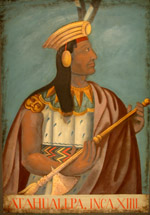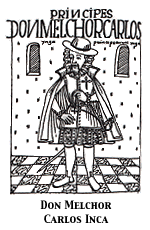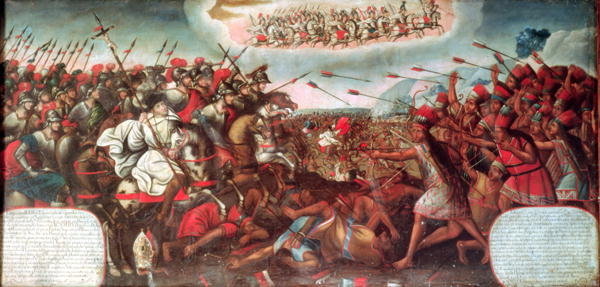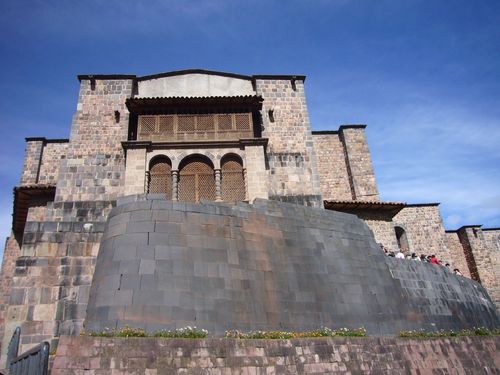Kim MacQuarrie’s Peru & South America Blog


Cusco (3-4 Days)
Visiting The Cora Cora
To the north and uphill from the Plaza de Armas runs Suecia Street. At its base and reaching the plaza once stood the Cora Cora, which was the palace of Sinchi Roca, an early Inca king. During Manco Inca’s uprising, his warriors seized the area around Cora Cora, and from it rained down sling stones and arrows against the conquistadors, who were holed up next to what is now the Cathedral. Although the palace is not visible from the street, if you go into any of the courtyards or restaurants along Calle Suecia, you can still see one of the massive stone walls that made up the palace (have lunch in the Gaucho Grill, for example, whose massive rear wall is actually a 500-year-old palace wall).
Visiting the Church of Paullu Inca, Manco Inca’s Brother
If you continue up Suecia Street from the Cora Cora, then turn right and head up a parallel street further up the hill, called Resbalosa, you’ll come to San Cristóbal Church, which sits on a promontory that overlooks Cusco. The church was built by Paullu Inca, Atahualpa’s youngest brother and the brother of Manco Inca, the great Inca rebel emperor who fought a protracted war against the Spanish and nearly won…
(more…)

The Last Days Of The Incas Battle Scene
Cusco (3-4 Days)
Visiting La Merced Monastery and Church
(Burial site of Diego de Almagro Sr, Diego de Almagro Jr, and Gonzalo Pizarro. Repository of the painting (above) that adorns the cover of The Last Days of the Incas)
Just a block to the southwest of the Plaza de Armas (which makes three major churches in a three-block radius!) lies La Merced Monastery and Church, begun in 1534 and rebuilt in the late 17th century. The monastery (to the left of the church) is one of the little-known jewels of Cusco and is beautifully designed around a central garden and courtyard. The arcades around the garden are surprisingly hung with a large number of “Cusco-school”-style paintings of very high quality. The first painting on the left, in fact, as you enter the monastery, is the same painting that adorns the (U.S. and Canadian version) cover of The Last Days of the Incas. It actually depicts armored Spaniards on horseback fighting the fierce Araucanian Indians in central Chile, who resisted Spanish attempts to conquer them for centuries. On one of the horses rides a white-robed Mercedarian friar carrying a lance–one end of which bears a metal crucifix. Above him, the Spanish patron Saint Santiago, whom the Spaniards often invoked during their pitched battles against various natives in South America, is performing a miracle—turning the Araucanians’ arrows back upon themselves. On the far side of the cloister you’ll find a small art museum. Within it (and outside on the cloister’s walls) is the best collection of Cusco-school paintings in the world…
(more…)

Cusco (3-4 Days)
Visiting the Qoricancha, or Inca Temple of the Sun
Two long blocks southeast of Cusco’s Plaza de Armas stands the church of Santo Domingo and below it, the Inca’s most sacred temple, the Qoricancha, or temple of the sun. When the first three Spaniards Pizarro had sent to Cusco arrived, they found the Incas’ sun temple gleaming literally like gold. With Pizarro still holding the Inca emperor Atahualpa hostage in northern Peru, the Inca general in charge of the city, General Quisquis, found himself forced to comply with Atahualpa’s orders to help the three Spaniards loot gold and silver from the capital.
Quoting from Chapter 5 of The Last Days of the Incas:
“What had really caught the trio’s attention, however, from the moment they had looked down upon the capital after crossing the final crest of hills, were certain buildings that seemed to burn as brightly as the sun, as if the buildings themselves had been dipped into a golden fire. After some investigation, they discovered that, sure enough, “These buildings were sheathed on the side where the sun rises with large plates of gold…They said there was so much gold in all the buildings of the city that it was a marvelous thing…[and that] they would have brought much more of it if this would not have detained them longer, because they were alone and over 250 leagues from the other Christians….”
(more…)




